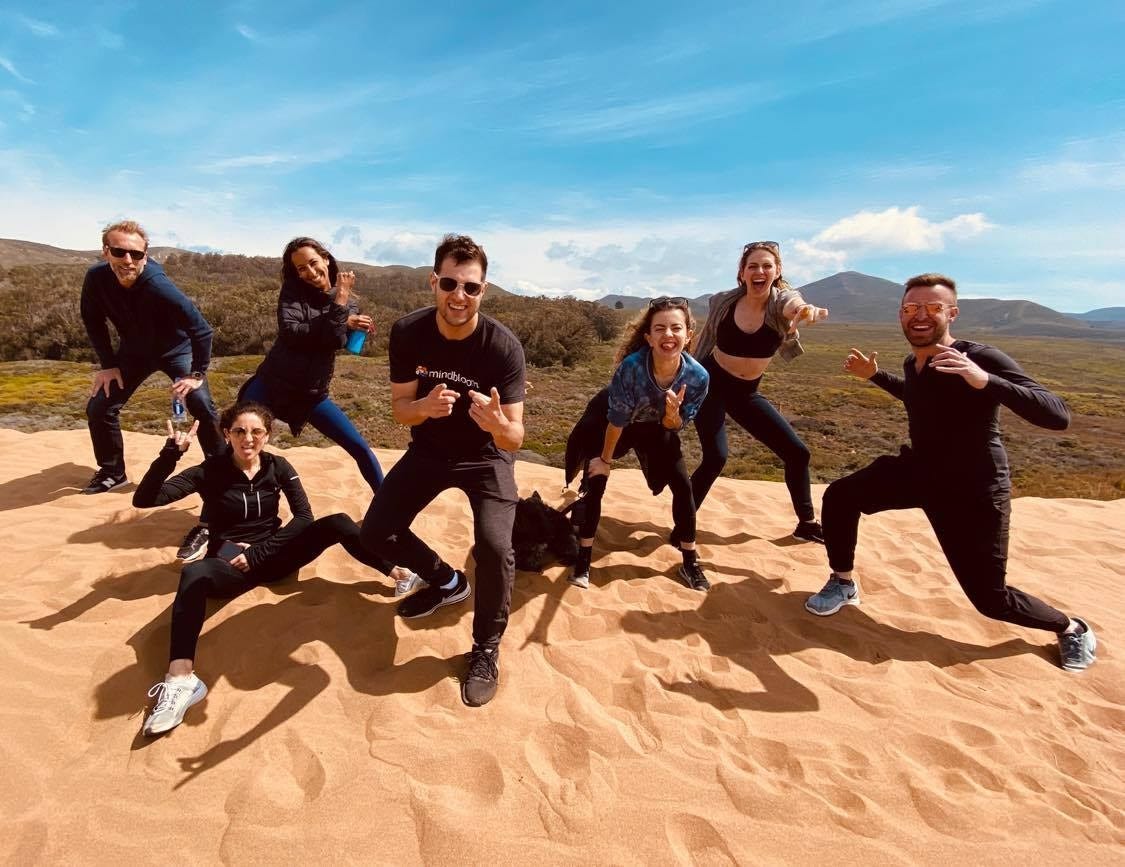Once upon a time, cities were vibrant places to learn, work, play, and meet Tinder dates.
Then came COVID. The rents many were paying to live in a top tier city suddenly seemed a lot more expensive. People are giving up their apartments en masse: in New York City, there are 85% more properties available to rent this year than there were this time last year.
And of course, if you’re in San Francisco and looking at this outside your window, you might be thinking of getting out.

Some have moved in with parents or returned to hometowns. But others have started to put together small groups of friends and rented houses in beautiful, remote locations. You get a COVID test or quarantine until you know everyone’s safe, then hang out like we used to in the before times.
We call it the traveling quaranteam.
Done right, it’s a way to see the world, enjoy human contact, and save money relative to the rent you were paying in a major city, while not contributing to community spread.
And, as a bonus, it’s a great way to practice coliving. Many folks who never considered coliving are comfortable going in on a vacation house with friends for a month or several.
Joel Wishkovsky, founder of Simple Health, was on a ski vacation with friends when states began to shut down. Rather than going home to New York, he decided to rent a cabin in Paso Robles, California with the same friends.
Many things about the setup were idyllic. Lunch breaks involved hiking through national parks. But it wasn’t all easy: in Joel’s words, there was ‘a lot of effort on the emotional, logistical, and financial side.’ Coming to an agreement on COVID safety protocols, shared food preferences, and finances all took some work (which this NY Times piece that profiles them gets into). But after a few long conversations the group found themselves enjoying the situation so much that they ended up renting a series of cabins together for almost five months.
I asked Joel if he’d ever considered living with a bigger group of people as an adult before. He hadn’t. But his experience with his traveling quaranteam has made him consider coliving longer term.
A few years ago, Monique Giggy and her husband bought a villa in Puerto Vallarta, Mexico, with a goal of retiring there eventually. ‘We were thinking of how we want to live when we’re super old - we don’t want to be in a nursing home. We want multiple co-living homes and to be surrounded by our friends in beautiful settings.’

The pandemic moved that timeline up thirty years. The Giggys have been sharing their home with friends who needed to leave their city apartments because of health concerns or economic necessity. Every person who arrives isolates until they are able to take a COVID test.
‘Not being around people is hard on the soul. When people get their negative test and they hug someone else for the first time in months, it’s the most amazing feeling,’ Monique says.
Enjoying physical contact isn’t the only benefit. Monique’s social circle are mostly entrepreneurs, and proximity lends itself to collaboration. ‘Strategy sessions happen over lunch. Companies have raised capital because of the folks they’ve met in the shared living space.’
If you think a traveling quaranteam could be right for you, how do you start one?
As the pandemic set in and all her meetings went virtual, Sasha Hoffman, who leads Uber’s Rewards program, headed for Palm Springs in mid March. Knowing that COVID wasn’t ending soon, she wanted to go shelter somewhere where she could do her favorite things: be with friends, work productively, and spend time outdoors. Step 1 was finding the ‘right home’ where it was easy to never leave because the home had all the amenities her friends would want. She invited 5 friends to join her in a 5 bedroom place with fast wifi, enough soundproofing that everyone could take calls simultaneously, hammock, hot tub, and accessible (open) nature trails. They ended up staying for two months, and she’s subsequently booked houses in San Diego, LA, Jackson Hole and San Jose Del Cabo with a group.
She finds properties on Airbnb, VRBO, or by calling hotel properties with residences or villas and asking for monthly rates. ‘At the start of COVID, rates had plummeted, but now that everyone is leaving town and looking for homes, they have gone back up. You can still get amazing rates outside the US and by calling to negotiate directly with vacation rental management companies.’
She sets the rents for the rooms and has never had trouble filling the houses she’s found. All other expenses, like groceries, are split equally.
For finding people to fill the rooms, ‘“recruiting” is the wrong word,’ according to Monique. ‘There are plenty of people who aren’t going to be comfortable with the idea of traveling to your place, or sharing a house with others.’
On the other hand, there are plenty of people who are sick of being isolated, or have given up their homes and are going to travel somewhere anyway. Both Sasha and Monique agree that there have been more people interested in joining their quaranteams than they’ve had room to support.
On picking roommates, Sasha said, ‘it’s very important to live with people who you’ve traveled with before, have been around for an extended period of time, or have asked enough questions to be able to understand if their day-to-day meshes with you. We all had a similar schedule - we worked from 8am-6pm most days and then shared all responsibilities at night. We had a cooking crew, cleaning crew, those who did grocery shopping and cleaning the house and we were diligent every night about playing our part. We even did group workouts in the mornings.’
Finding the right property can be tricky. Airbnb and VRBO aren’t generally optimized for finding month long stays, or amenities conducive to remote work. ‘Vacation rentals are marketing how close they are to good restaurants, the resort, how many beds they can cram into a space,’ says Joel. ‘Some have realized remote work is a thing, and have made things that are important for digital nomads front and center, but that’s a single digit percentage of the listings.’
To find the houses he ended up renting, Joel set a budget (his group decided on $1k per room) and searched for houses that were listed for 25-50% above that budget, then messaged the owners to see if they’d be willing to do a discount.
Joel also advises that it’s important to check what the wifi speed is and what noise levels to expect. One of the houses his quaranteam rented was directly underneath the flight pattern of a nearby airport. He almost booked another house that was gorgeous in the pictures but was next to a busy highway.
For obvious reasons, smaller groups are easier to wrangle than larger ones. Several organizers of traveling quaranteams I’ve talked to say 4-5 bedrooms are always easy to fill. Bigger houses can sound fun, but coordinating among many parties can turn into a full time job for whoever is organizing.
And as anyone who has ever planned a vacation with friends knows, it’s always a good idea to get deposits from folks in advance so if one person’s plans change at the last minute the rest of the group isn’t left holding the bag.
What comes next?
A big part of the reason Phil and I started this blog is the upswell of interest we’ve seen in coliving since the pandemic began. The idea of living on ‘Bestie Row’ was already gaining steam, but 2020 threw a whole bunch of oil on that fire.
Over the coming months, we’ll be documenting many more stories of people starting new coliving communities through the pandemic. But if you, like the vast majority of people, haven’t already been living with the people you’d consider getting property with, it might be a good idea to try before you buy. A traveling quaranteam could be the first step to figuring out whether coliving could be for you.
Curious about coliving? Find more case studies, how tos, and reflections at Supernuclear: a guide to coliving. Sign up to be notified as future articles are published here:
And you can find the directory of the articles we’ve written here and those we plan to write here.






I also just came across this piece from Gui Perdrix about how he threw together a coliving house in 14 days - a rather different time, but lots of good learnings that would apply today too: https://www.colivingdiaries.com/blog/how-we-built-a-coliving-space-in-less-than-14-days-and-how-you-can-learn
Any stories or experiences from the community of parents with kids doing a traveling quaranteam? We’re thinking about trying one now, bringing childcare with.